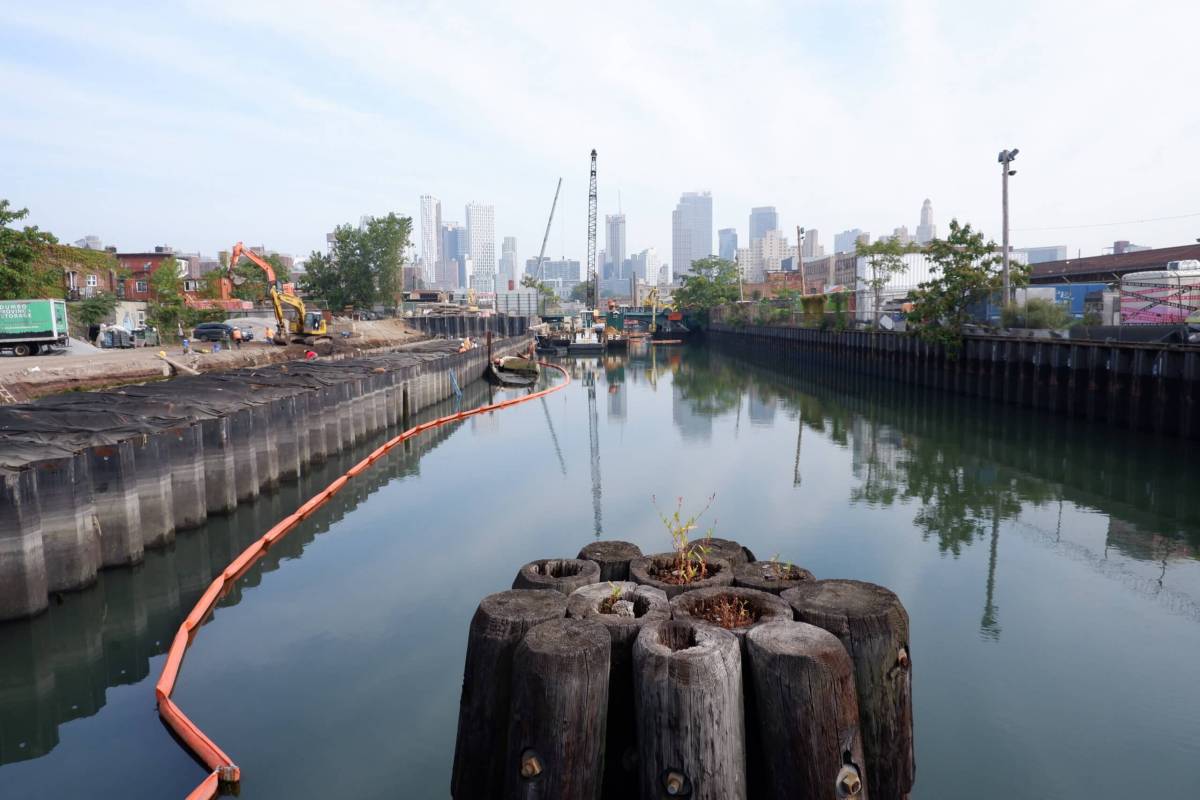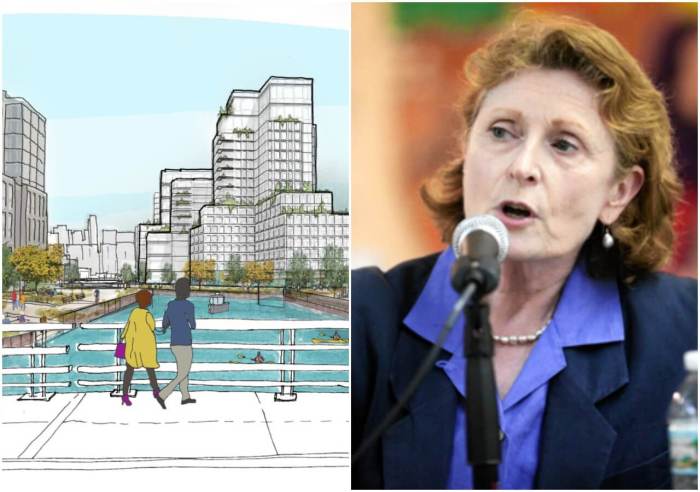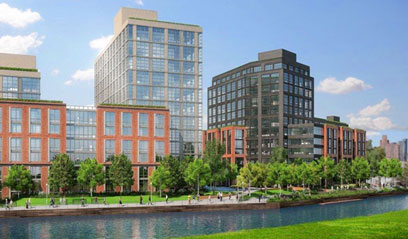The proposed Gowanus rezoning that figures to bring dozens of new developments and some 20,000 new residents to the neighborhood could actually reduce the amount of sewer and rainwater overflows that flush into the noxious canal, city officials claim.
Citywide rule changes to stormwater management will require developers of new buildings to construct infrastructure that retains stormwater during heavy rain — effectively cutting some 5 million gallons of combined sewage and runoff that would otherwise flow annually into the canal, amounting to a roughly 5 percent reduction, according to environmental and planning reps.
“With these new policies, Gowanus will be a cleaner, greener, and more equitable neighborhood — for its current residents, and for generations to come,” said Department of City Planning Director Marisa Lago at a Wednesday community meeting.
The so-called Unified Stormwater Rule, which the city is currently drafting independently of the neighborhood-wide rezoning, will require developments of a certain size to retain stormwater on their property in an effort to keep the city’s aged sewer system from backing up and spilling into the fetid waterway.
Builders can install capture tanks, rooftop gardens, or roofs that store water and release it slowly back into the system, according to a DCP rep, who argued that these water capturing facilities are a form of infrastructure upgrade to the neighborhood’s storm management capability.
“What we’re showing here is that the new development is part of that infrastructure,” said Jonathan Keller, DCP’s project manager for the rezoning at a virtual presentation to Community Board 6 on Dec. 2.
Some 20,000 newcomers are likely to move to the post-rezoned neighborhood by 2035, adding some 1.25 million gallons of sewage to the system per day, or about 458 million gallons of waste every year, according to city calculations.
While the city promises an overall reduction in volumes of combined sewer outflows, or CSOs, they did not clarify whether the remaining discharges would have a higher proportion of sewage, since the roofs and retention tanks only capture stormwater.
DEP spokesman Ted Timbers told Brooklyn Paper that sewage concentration will be “similar to what we see today.”
Currently, hundreds of millions of gallons of raw sewage and runoff flow into the Gowanus every year when the city’s combined pipes and treatment plants are overwhelmed during heavy rain.
The city is also on the hook for constructing two massive retention tanks along the canal as part of the federal Superfund cleanup, which will hold a combined 12 million gallons of overflows to reduce the re-pollution of the waterway during storms.
These forecasts were met with some skepticism by local environmental stewards, including one who questioned how the city would enforce and monitor the effectiveness of the new stormwater rules.
“How will DEP be following up with actual monitoring in the canal to ensure that it’s working?” asked the head of the Gowanus Canal Conservancy Andrea Parker.
A DEP rep said that the city has monitoring stations in the area to check for levels of fecal matter and other indicators such as dissolved oxygen every month, along with a full regular survey of outflows, which covers all discharge points around the Five Boroughs every three years.
“[This data] really indicate the health of the ecosystem both the health for human activity and the health for the habitat we want to encourage to either thrive or actually return to some of these areas,” said the agency’s deputy commissioner of sustainability Angela Licata. “We will report any what we see as maybe illicit activity to the state for enforcement.”
City planners also unveiled incentives for developers under the rezoning to improve area subway stations, and earmark space for the city to construct new schools in exchange for bigger buildings.
Developers along Fourth Avenue between Atlantic Avenue and Ninth Street will be able to add up to 20 percent more floor space — or up to three stories higher — if they add upgrades to local subway stations, such as wider stairs or disability-friendly elevators.
The station improvements can be for the three stops along that thoroughfare, including Atlantic Avenue-Barclays Center, Union Street, and Fourth Avenue-Ninth Street stations.
For example, Manhattan developer Avery Hall in 2019 offered to give the Union Street entrance for the Bay Ridge-bound R train an $11 million makeover in exchange for a larger building on top.
To handle an influx of new kids coming to Gowanus, developers of the largest sites can add extra bulk to their buildings if they set aside space for the city’s School Construction Authority to build a public school at the base of the structure, if officials deem a new facility necessary.
If developers’ lots are larger than 30,000 square feet, they can exempt up to 60,000 square feet of floor space for a school, meaning they can add that amount of bulk on top of what is allowed under their lot’s zoning. Along the canal, developers can add four stories for a new set of class rooms.
The city still plans to hold a final meeting on the rezoning focused on below-market-rate housing prior to the official launch of the land use review procedure in January, however Keller did not give a date for that meeting yet, saying only it would likely be some time during that month.
Update (Friday, Dec. 4, 4 pm): This story has been updated to include further comment by DEP.























